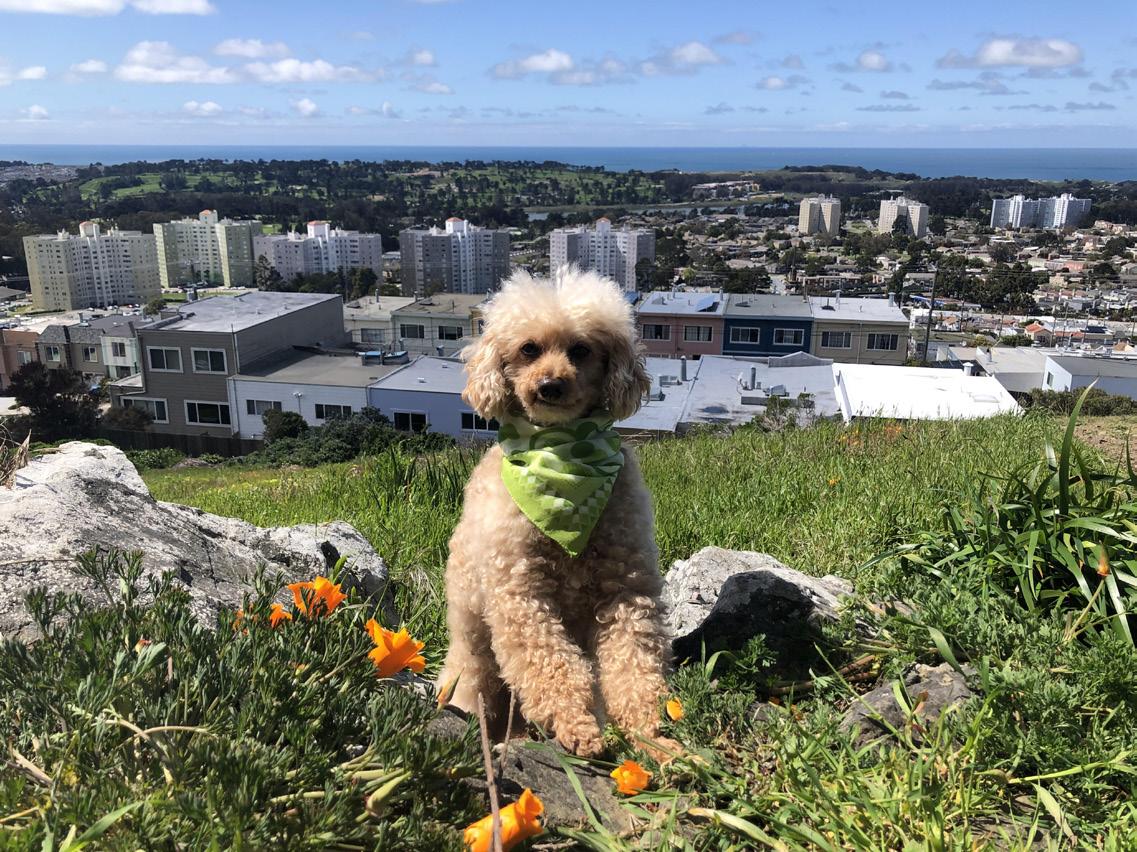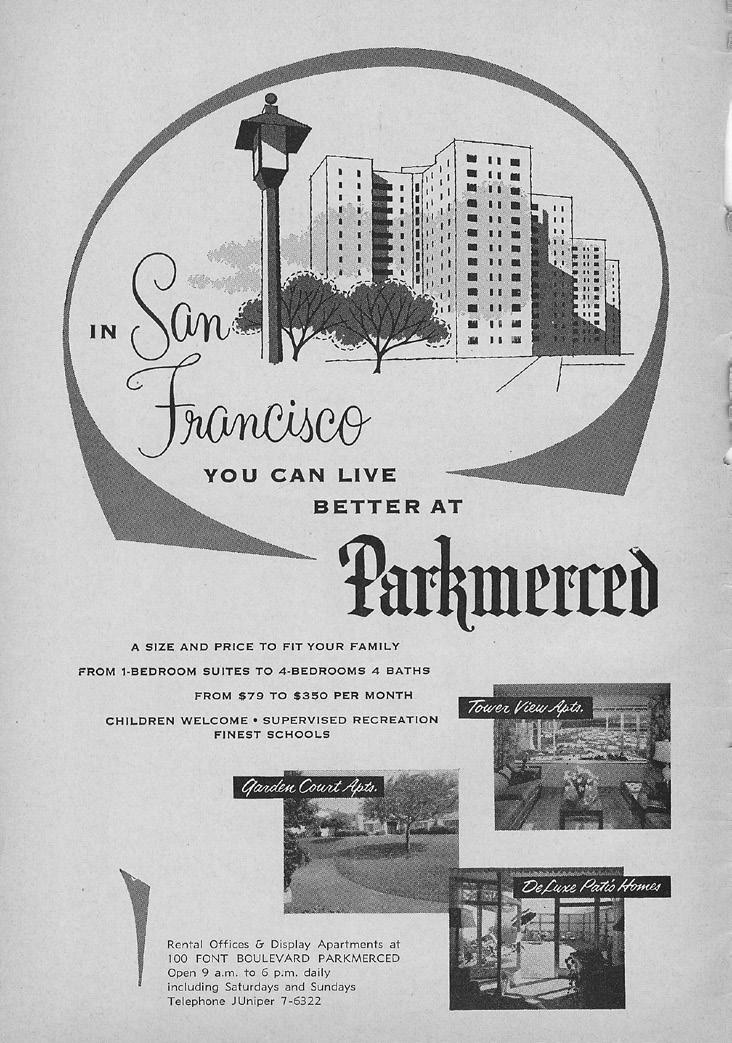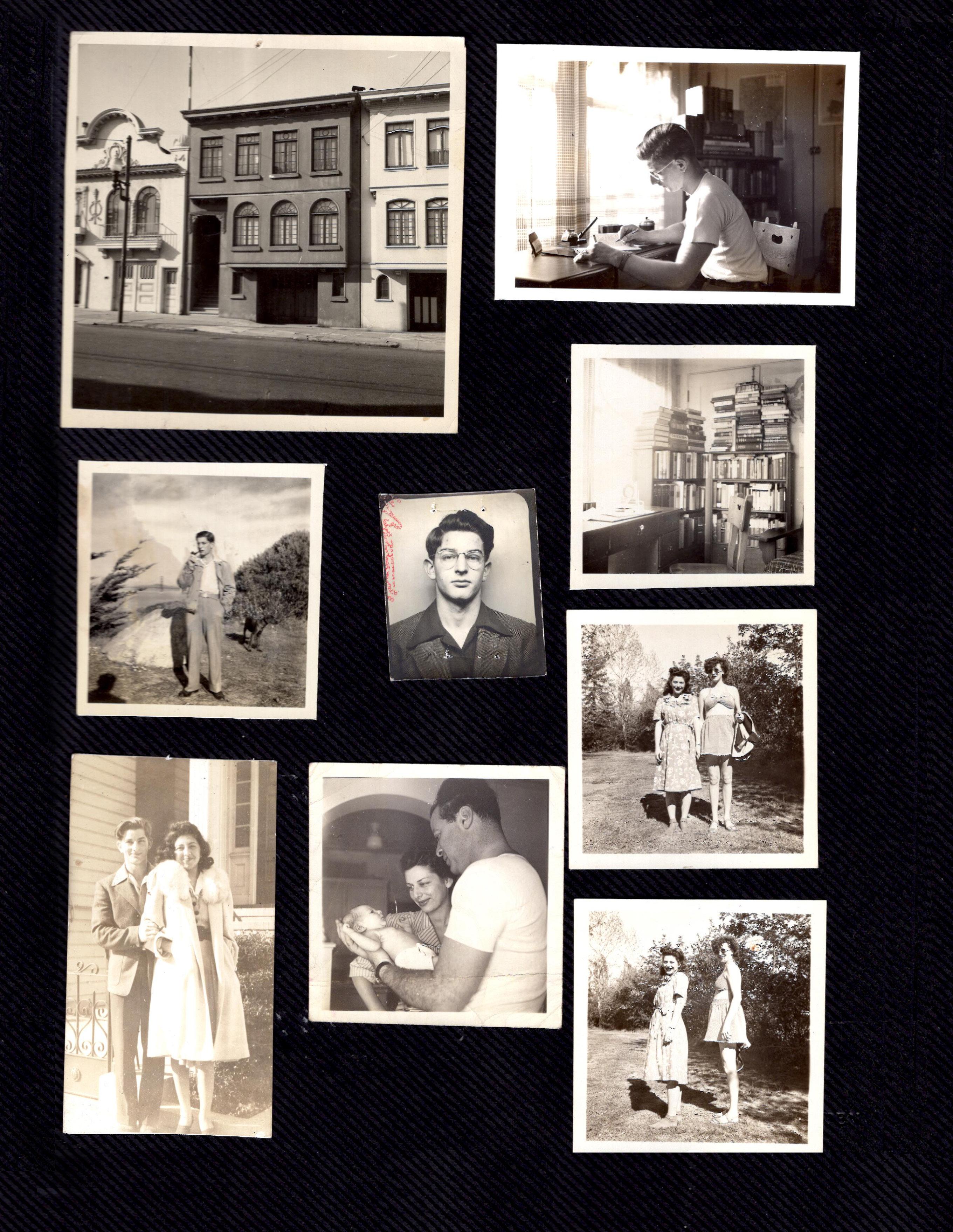
2 minute read
WHERE IN WEST S.F.?
By Paul Judge and Margaret Ostermann
A blanket of fog creeps in from the ocean, poised to soon obscure this westward view from Merced Heights in our mystery photo. Lake Merced sits idly, but no idling cars are yet backed up along 19th Avenue or Brotherhood Way. It is 1944. The distinctive towers of Parkmerced have yet to be built, but the neighborhood’s colonnaded townhomes spread out in a web-like labyrinth, ready to confuse new renters navigating the neighborhood’s many roundabouts and pieshaped lots.
Advertisement

David Wallace and Siobhan Ruck easily recognized the scene’s major thoroughfares, correctly placing the photographer in modern-day Brooks Park. The park’s name honors Jesse and Helen Brooks, who lived on the hill’s summit from 1936-1966 while the landscape below transformed from seemingly rural to emerging metropolis. David Volansky went one step further and cleverly narrowed the photo’s era by identifying and dating the homes in the foreground along Ralston Street: “These homes were built in 1941 while their missing adjacent neighbors were built in 1948.”
The World War II-era housing demand, and subsequent baby boom, meant that the open spaces of southwestern San Francisco were keenly eyed for development. Along the east shore of Lake Merced, the site of Ingleside Golf Course became the location of Parkmerced. Capitalizing on the steady cash flow of rental housing, the Metropolitan Life Insurance Company set out in 1941 to house over 2,500 middle-income families in two-story, single-unit attached homes with rear patios opening onto shared lawns. These common spaces offered married couples starting families with play areas for interaction with their neighbors. Paul recalls fun Sunday barbecues with his eldest sister and brother-in-law’s young family, plus their neighbors. They bundled up warm and ate dinner in the fog – not quite the same as a warmer setting in the suburbs.
The architecture and configuration of Parkmerced strongly set it apart from the familiar waffle-iron grid of the Sunset and Richmond districts. With streets radiating from roundabout intersections, instead of straight arteries, the dangers of speeding traffic were supposedly eliminated! By building on only 18% of the land, Parkmerced’s housing plan exalted all the advantages of suburbia – sunlight, playfields, and gardens – within city limits. However, restrictions on construction materials during WWII postponed full development and plagued the townhomes with issues of inferior quality.
By 1944, the year our mystery photo was taken, the first apartments on Font Boulevard were ready for renters at $52 to $84.50 per month. Four years later, Mayor Elmer Robinson drove a bulldozer to break ground on Parkmerced’s postwar expansion: 11 streamline moderne towers. Competing against flight to the suburbs, advertisements for the new 13-story towers emphasized the neighborhood’s unique combination of both city conveniences and “suburban advantages.” The peculiar “winged” tower design sought to optimize sunlight and airflow, although any renter will attest that it simply amplifies the noise, smell, and sight of your neighbors through windows facing in on each other. The first tower units were ready in 1951, at $115 to $177 per month. While Parkmerced did not have explicit racial covenants, exclusionary rental practices kept the population overwhelmingly white. A few tenants sued Met Life over these practices – and won – in a case that reached the U.S. Supreme Court in 1972.

In marked contrast to the sweeping development 70 years ago, today Parkmerced sits stalled on their own comprehensive redevelopment plan. Approved by the Board of Supervisors in 2011, the project would replace the aged townhomes with multi-story buildings, reroute Muni’s M-line through the neighborhood, and re-align streets; all while maintaining rent protections and relocation rights for existing tenants. Perhaps a financial fantasy, the proposed start dates have come and gone while mold, leaks, and heating issues continue to blight Parkmerced.
Nevertheless, the suburban-inspired lawns of Parkmerced make it an attractive dog walking location, as frequent visitors Dorothy Fellner and her poodle Buddy can attest. Up in Brooks Park, near her home of over 40 years, Dorothy continues to enjoy the grand vistas from “this little known but expansively beautiful hilltop park.”






